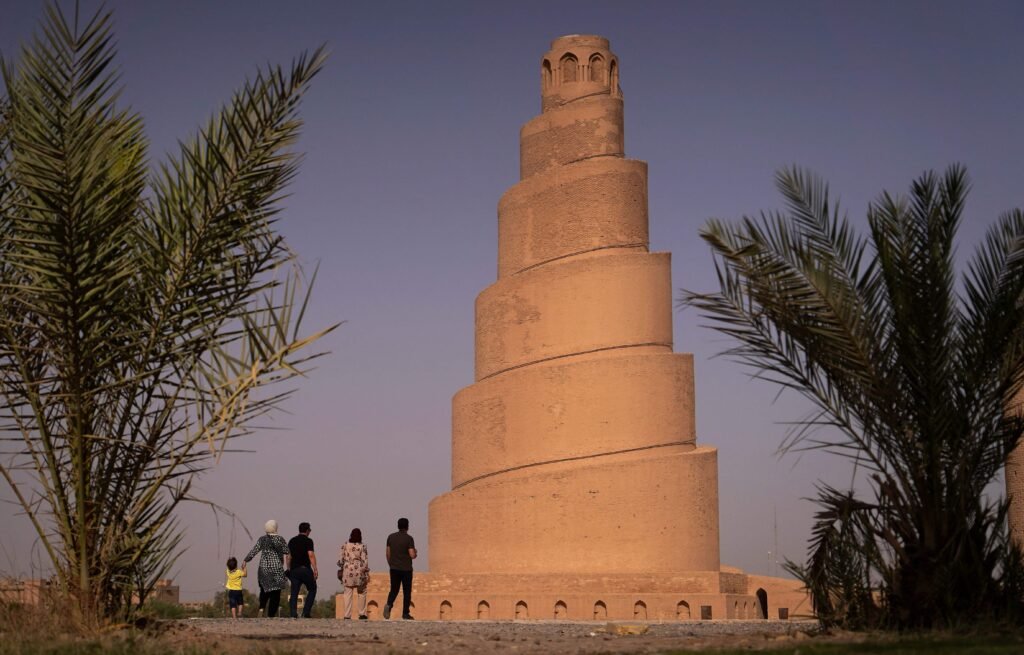Introduction
Samarra, located along the Tigris River, is one of Iraq’s most remarkable historical cities. Once the capital of the Abbasid Caliphate in the 9th century, Samarra is home to stunning Islamic architecture, ancient palaces, and UNESCO-listed sites. From the iconic Great Mosque of Samarra to the lavish ruins of Abbasid palaces, this city offers a glimpse into Iraq’s Islamic golden age.
1. The Great Mosque of Samarra & The Malwiya Minaret
The Great Mosque of Samarra is one of Iraq’s most recognizable landmarks. Built in 852 AD by Caliph al-Mutawakkil, this mosque was once the largest in the world. Although much of the structure is now in ruins, its most famous feature remains: the Malwiya Minaret.
This massive spiraling tower, standing at 52 meters (171 feet) tall, was originally used for the call to prayer. Today, visitors can climb to the top of the minaret for breathtaking views of Samarra and the surrounding Tigris River landscape.
2. The Caliphal Palace – A Glimpse Into Abbasid Royalty
Samarra was once the political center of the Abbasid Empire, and its rulers lived in luxurious palaces. Among the most impressive is the Jawsaq al-Khaqani Palace, known for its elaborate courtyards, water canals, and stunning tilework.
Exploring the ruins of this palace provides a glimpse into the grandeur of Abbasid architecture and the sophisticated urban planning of the time.
3. Al-Askari Shrine – One of Islam’s Holiest Sites
The Al-Askari Shrine is one of the most significant religious sites in Iraq, revered by Shia Muslims. This golden-domed shrine is the resting place of Imam Ali al-Hadi and Imam Hasan al-Askari, two of the twelve revered Imams in Shia Islam.
Despite suffering damage in the past, the shrine has been beautifully restored and continues to attract pilgrims from around the world. Even for non-religious visitors, its intricate golden dome and peaceful atmosphere make it a must-see attraction.
4. The Samarra Archaeological City – A UNESCO World Heritage Site
In 2007, Samarra’s archaeological sites were designated as a UNESCO World Heritage Site due to their historical and cultural significance. The city offers a wealth of Islamic art, early mosque architecture, and remnants of Abbasid urban design.
Walking through the archaeological ruins, you’ll find ancient roads, defensive walls, and even the remains of one of the first spiral minarets in the world.
Conclusion
Samarra is a city that brings history to life. Whether you’re climbing the Malwiya Minaret, exploring Abbasid palaces, or admiring the Al-Askari Shrine, every corner of this city tells a fascinating story.
If you’re interested in Islamic history and architecture, Samarra is a must-visit destination in Iraq. Would you be interested in visiting this incredible city? Let us know in the comments!






